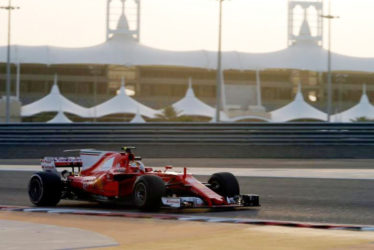SOCHI, Russia,(Reuters) – Formula One’s plans to introduce a transparent cockpit ‘shield’ could make racing more dangerous in wet conditions, Danish driver Kevin Magnussen said on Thursday.
The governing International Automobile Federation (FIA) announced this week that it was focusing on the concept rather than a previously tested ‘halo’ cockpit protection system.
It said track tests would be carried out in preparation for implementation in 2018.
“We’ve seen some pictures. I’m not for it,” Haas F1 driver Magnussen told reporters ahead of Sunday’s Russian Grand Prix.

“I don’t think we need something like that. I think it’s going to be difficult, especially in the wet, with the screen. Even without a screen, in the wet it’s difficult to see anything.
“I’m sure with that, as well, it’s going to be impossible and more dangerous,” added the former Renault and McLaren driver, who said he would prefer to continue without either system.
The ‘halo’ device, fixed at three points including a central pillar in front of the driver that supports a protective overhead loop, was extensively tested last season with a mixed response.
Cockpit protection is seen as a key area following fatalities in other series where drivers were hit by wheels and flying debris.
While the FIA said in January that the safety benefit had been established, some leading F1 figures were wary about dramatic changes to the look of the cars.
This year’s cars have already been criticised by some for their shark-like fins and aerodynamic wings.
The same FIA Strategy Group meeting that resolved to focus on the shield concept also agreed changes to the 2018 regulations to end the fins.
“It looks better,” said Force India’s Mexican Sergio Perez of the shield. “It’s probably not at the level of halo in terms of safety but there is a lot of improvement that the FIA think can be done.”
Brazilian Felipe Massa, who suffered severe head injuries in 2009 when he was hit by a bouncing spring during Hungarian Grand Prix qualifying, said safety had to come first.
French driver Romain Grosjean, whose compatriot Jules Bianchi died in 2015 of head injuries after the previous year’s Japanese Grand Prix, agreed but disliked both offerings.
“I think safety in Formula One has to be the number one priority but… the next step is to put a closed canopy on top of the helmet and I don’t want to see Formula One being closed cars,” said the Haas driver.





